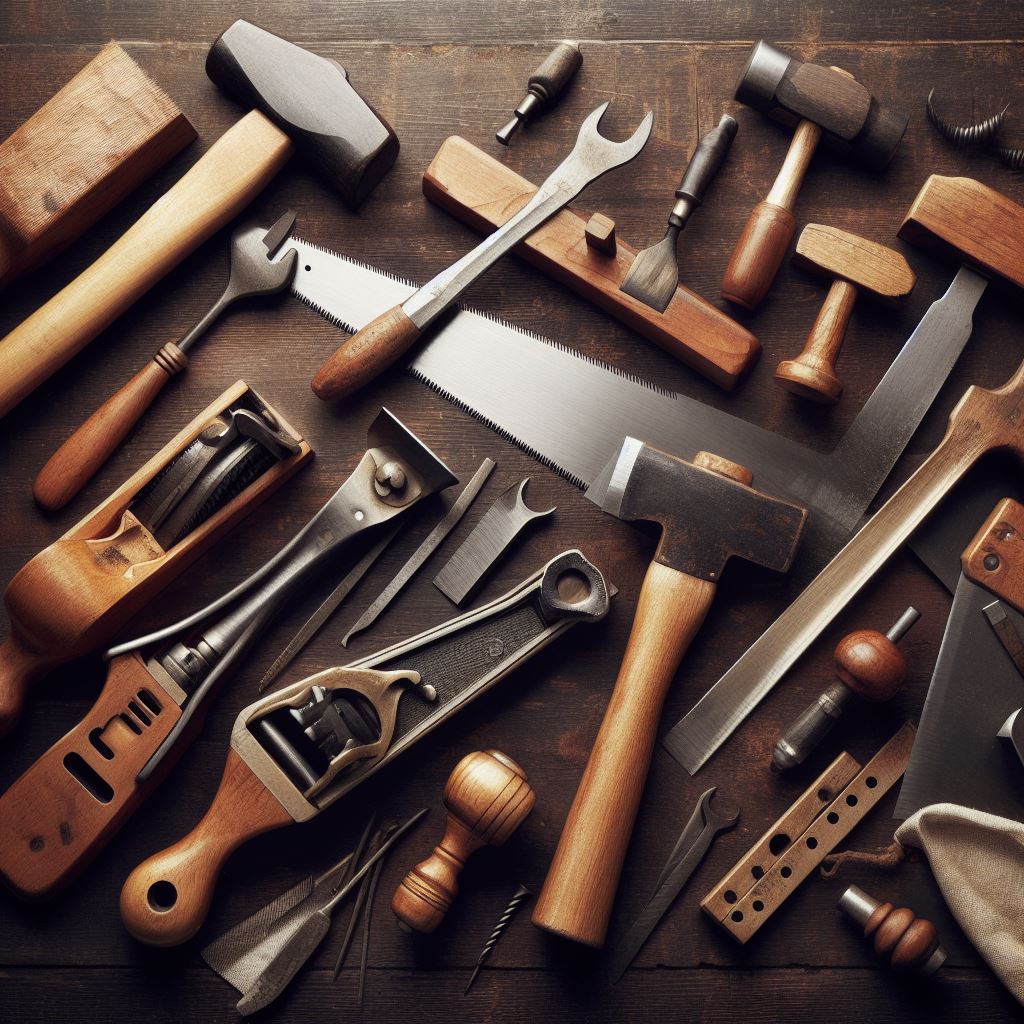
Essential Hand Tools for Woodworking: A Complete Guide for Beginners
Introduction
Starting your woodworking journey requires the right set of tools. Whether you’re planning to create beautiful wooden crafts or tackle beginner woodworking projects, having the essential hand tools is crucial for success. In this comprehensive guide, we’ll explore the must-have woodworking hand tools that every beginner needs in their arsenal.
Key Takeaways Table
| Tool Category | Purpose | Skill Level Required |
|---|---|---|
| Measuring & Marking | Precise measurements and layouts | Beginner |
| Cutting Tools | Basic wood shaping and sizing | Beginner-Intermediate |
| Shaping Tools | Detail work and finishing | Intermediate |
Essential Measuring and Marking Tools
Before making any cuts or joining any wood, accurate measurements are essential. Let’s explore the fundamental measuring and marking tools you’ll need for clean, precise cuts.
Measuring Tools
- Tape Measure: For general measurements
- Combination Square: For checking 90° and 45° angles
- Marking Gauge: For parallel line marking
- Steel Rule: For precise short measurements
Marking Tools
- Pencils: Both standard and carpenter’s pencils
- Marking Knife: For precise layout lines
- Awl: For creating starting points
Cutting Tools for Woodworking
The backbone of any woodworking toolkit is a good set of cutting implements. Here’s what you need to get started with basic woodworking projects.
Hand Saws
Every woodworker needs a variety of saws for different cutting tasks:
- Ripsaw: For cutting with the grain
- Crosscut Saw: For cutting across the grain
- Coping Saw: For intricate curved cuts
Chisels
A good set of chisels is essential for:
- Joint making
- Wood removal
- Detail work
Shaping and Smoothing Tools
Creating smooth, finished surfaces requires the right tools for shaping and smoothing your woodwork.
Planes
Hand planes are versatile tools that come in various types:
- Block Plane: For end grain work
- Jack Plane: For general smoothing
- Japanese Handplanes: For ultra-smooth finishing
Sanders and Scrapers
For achieving the perfect finish:
- Hand Sanding techniques
- Card Scrapers for smooth surfaces
Storage and Organization
Proper tool storage is crucial for longevity and accessibility. Consider these storage solutions:
- Wall Mounts
- Small Parts Organizers
- Compact Workbenches
Frequently Asked Questions
What are the absolute minimum hand tools needed to start woodworking?
For absolute beginners, start with a basic kit of measuring tools (tape measure, combination square), cutting tools (handsaw, chisel set), and smoothing tools (block plane, sandpaper). These will allow you to complete simple wooden crafts and basic projects while learning fundamental techniques.
How much should I expect to spend on basic woodworking hand tools?
A quality starter set of hand tools typically costs between $200-$500. While it’s possible to spend less, investing in quality tools will provide better results and last longer. Consider starting with fewer high-quality tools rather than many low-quality ones.
What’s the difference between Western and Japanese hand tools?
Western tools are typically designed to cut on the push stroke, while Japanese tools cut on the pull stroke. Japanese tools like their handplanes often provide exceptional precision but require different techniques and more maintenance.
How do I maintain my woodworking hand tools?
Regular maintenance includes cleaning after use, proper storage in a dry environment, occasional oiling of metal parts, and keeping cutting edges sharp. Learn proper tool maintenance techniques to extend the life of your investments.
Which hand tools should I upgrade first as I gain experience?
Start by upgrading the tools you use most frequently. Many woodworkers first upgrade their chisels and planes, as these tools significantly impact work quality. Consider exploring specialized tools as your skills advance.
Can I start woodworking without power tools?
Absolutely! Many beautiful projects can be completed using only hand tools. Check out our guide on beginner woodworking projects without power tools for inspiration.
Where’s the best place to buy quality hand tools?
Purchase tools from reputable woodworking suppliers and specialty stores. Consider both new and vintage tools – many older tools offer excellent quality when properly restored.
External Resources
- Popular Woodworking’s Hand Tool Basics
- Fine Woodworking’s Tool Guide
- YouTube Video: Getting Started with Hand Tools – Paul Sellers
Conclusion
Building your collection of essential woodworking hand tools takes time and consideration. Start with the basics and gradually expand your toolkit as your skills and project needs grow. Remember to focus on quality over quantity, and always prioritize safety and proper technique in your woodworking journey.

